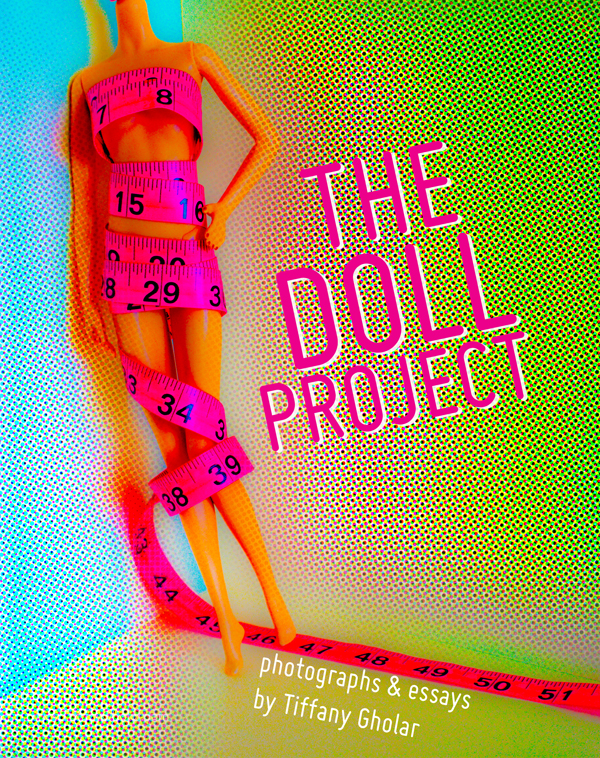[SPOILER ALERT: this post contains spoilers for the 2023 Barbie movie.]
I never wanted to watch movies about Barbies as a kid because I felt no need to see them. As I wrote about in detail in The Doll Project, the official character traits and storylines Mattel had assigned to Barbie, her sisters, and her friends were wholly irrelevant to the roles and relationships I had imagined the dolls in my collection to have. Some were heroines and some were villains. Some were single career women and some were married. Some had biological children and some adopted. And sometimes I changed my mind about who my Barbie characters were or improvised when playing with my cousins and friends.
It wasn't until I was well into adulthood that I began watching Barbie media, adding it to the mix of silly kids shows that I watch to relax. Some people unwind with reality TV; I've always preferred cartoons. So when the news about Barbie: The Movie came out, I was actually looking forward to seeing it. I had enjoyed Barbie: Life in the Dreamhouse and Barbie: It Takes Two. My skepticism about The Lego Movie and Trolls had been unwarranted, as it turned out, and I found both toy-based movies to actually be insightful, heartwarming, and rewatchable entertainment for my inner child.
As a doll collector, I was thrilled to see all the new movie tie-ins. These are two of my favorites:
I was excited to dress up and go to the movies since I haven't been to a theater since 2020.
I went with 2 of my cousins and 1 of my friends. Aside from the excitement of seeing a film in person again, the spectacle of a Barbie world on a big screen was captivating. The costume and production design were impeccable. The soundtrack was great. However...
But something was missing.
I appreciated the feminist theme throughout the film. If horrible men like Ben Shapiro hate it, I thought, it must be good. But as a Barbie collector who also studied many forms of storytelling—from fiction writing to playwriting to screenwriting—I was very disappointed with they the way the movie's elements came together.
There have been too many good movies about toys for this one to be so muddled. The Toy Story, Lego Movie, and Wreck-It Ralph series have all cleverly played with the idea of toys and video game characters having minds of their own that the humans playing with them cannot perceive. There have been too many good models of a fish-out-of-water character from a more innocent world coming face-to-face with our sometimes ugly reality—like my beloved Elf where Buddy the Elf leaves the tidy little community that Santa and his elves have built for themselves in the North Pole to live in gritty early 2000s New York City—for this one to execute the trope so poorly. I also think there was a missed opportunity for Ken to be a lovable hapless himbo who stumbles into success somehow, like a cross between Zoolander and Forrest Gump.
Instead, Mattel has given us a motley assortment of plot elements that kind of remind me of the loose parts you might find at the bottom of a toy box. It just occurred to me that the examples I gave in the previous paragraph are from films with male main characters. Maybe the Barbie writers were so focused on making points about the main character's gender that they lost the plot. Yes, the film is feminist, but what wave of feminism are they referencing, anyway? Nowadays, as more expansive notions of gender come into play, what is the point of fixating on a Barbie/Ken binary? Furthermore, why does Barbie's world have a gendered hierarchy? Why are the Kens and Barbies playing a zero-sum game? Why can't they share power? Why is Mattel ignoring their own products and acting like Ken dolls haven't had their own careers since the '60s?
It's also unclear who Barbie the movie is ultimately for. Its gender politics are a bit outdated for modern audiences, despite America Ferrera's outstanding monologue about the difficulty of being a woman in the world. The Kens drink copious beers after they take over, but the Mattel executives are very cartoonish in their chase scenes. President Barbie hilariously drops an f-bomb that is bleeped and censored by a Mattel logo and the Ruth Handler character speaks openly about her arrest for tax evasion, but the grown-up humor stands out because the story feels so immature. And all of this culminates in an ending that I found unsatisfying, despite its refutation of what I wrote in The Doll Project about Barbie looking so happy because she doesn't have to worry about things like breast cancer, PMS, and menstrual cramps. She has chosen to be human, but why? She has chosen to live in the real world, but why? Because the writers are obviously human and live in the real world? What's her motivation?
It seems as though Mattel is seeking to humorously deconstruct one of its most popular intellectual properties while still trying to sell us as much stuff as possible through a seemingly endless assortment of brand partnerships. But post-deconstruction, it doesn't reconstruct anything interesting, and it never considers that toys are what kids make of them. Children breathe life into them and it is their wild imaginations and not the text on the back of a bright pink plastic package that determine how things work in the multiverse of imagined Barbie worlds. Barbie and Ken can be anything, and the possibilities for storytelling with these miniature mannequins are endless, but you would never know that from this movie. If only they put as much effort into writing this film as they did into marketing it.













































